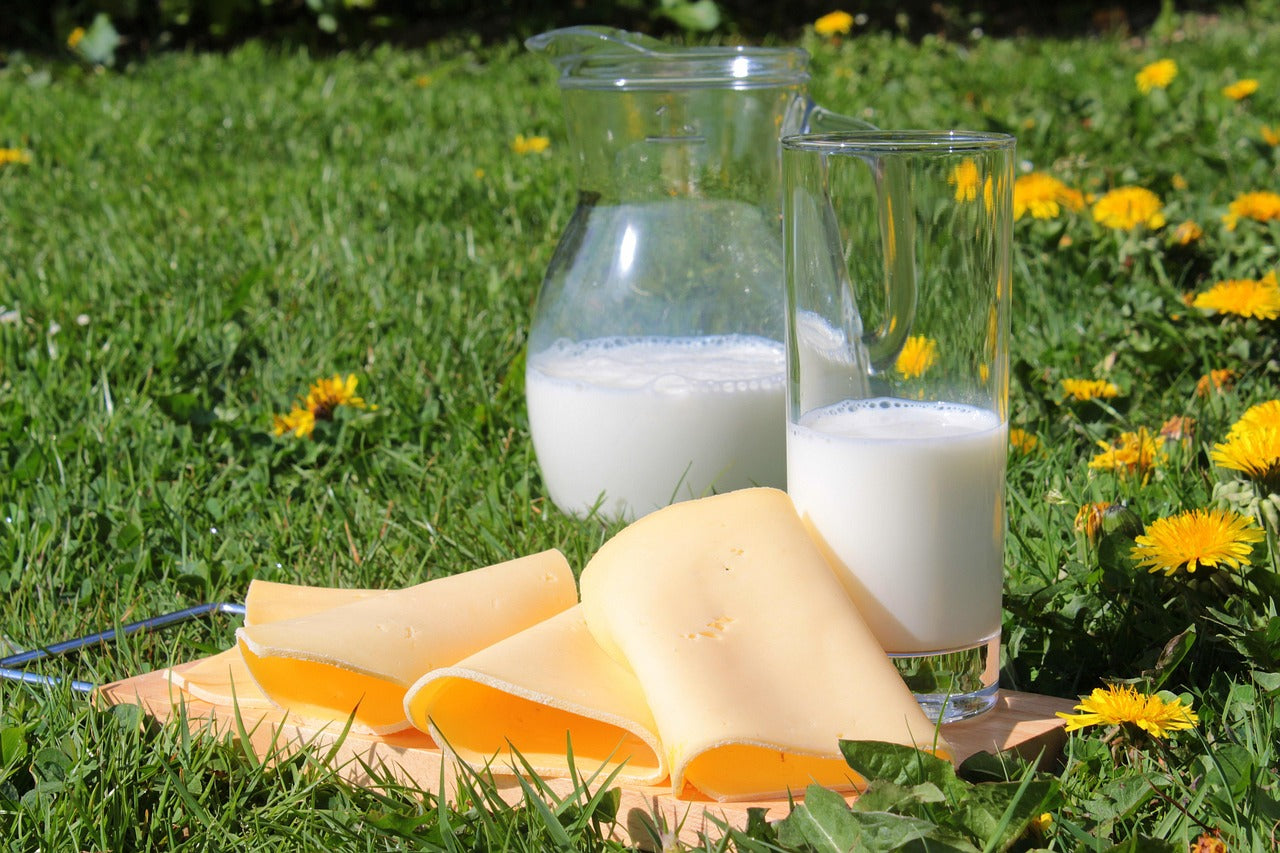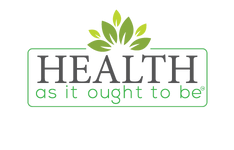
What Are They Doing to Our Dairy?
Dairy products have been with us for thousands upon thousands of years.
And while the paleo adherents will try to tell you that dairy is categorically bad for you, I don’t believe that’s the case…otherwise the Bible wouldn’t have God telling the Israelites to go to a land flowing with “milk and honey.”
Cow dairy is absolutely healthy when it comes from healthy bovine herds eating their natural diet (and you have no allergies or sensitivities to it).
And yet, in a quest to manipulate the agricultural system, “Big-Ag” is attempting to re-engineer milk and other dairy products so that they’re (un)"healthier."
What’s shocking is this whole effort is supposedly meant to help make us more healthy, as the food/medical industry continues to cling to the idea that saturated fats are inherently bad for us.
I know that’s not true, as do plenty of other physicians and healthcare practitioners, but we’re not the ones who are at the helm of billion-dollar companies…
So today, what I wanted to do is expose what exactly is happening and how, if you’re a consumer of dairy products, you could be affected.
The good news in all of this is you have choices when it comes to dairy, ones that are healthier than what is touted to be an improvement for human health…
Here’s What They’re Doing to Dairy
Before I get into what they’re doing, you should have a brief understanding of how exactly a cow turns food into milk.
Unlike a human, cows have 4 different stomachs, and these stomachs are filled with quadrillions of microorganisms that take roughage (grasses and other fibrous plants) and convert it into milk.
Milk is naturally fatty, and milk from pasture-raised cows, eating their hereditary diet (basically grass and other traditionally available crops), is going to be incredibly high in saturated fat and relatively low in monounsaturated fat, and virtually polyunsaturated fat-free.
Which is how I believe God intended milk to be.
Polyunsaturated fats (PUFAs) aren’t necessarily dangerous, but excessive consumption can lead to excessive inflammation.
The problem here is Americans who have strayed far from a diet filled with naturally occurring fats tend to get too many PUFAs in their diet as they tend to rely on foods utilizing seed oils for production, as well as significantly processed foods with PUFAs as primary ingredients.
As an aside, perhaps you didn't realize this, but most traditionally raised dairy cows are kept indoors for most of their lives to allow for controlled feeding, protection from extreme weather and health monitoring.
To help lower the saturated fat profile of modern dairy, policy-makers and their acolytes in the dairy industry are altering the diet of cows to lower the saturated fat content and correspondingly increase the PUFA content. Again, “in the name of health.”
As Dr. Joseph Mercola’s website details, this change in diet for cows (and other dairy-producing animals) is having an undesirable effect. We can't improve upon his content, so we've included Dr. Mercola's article below:
“Nature designed ruminants — like cows and goats — with a remarkable ability to convert dietary polyunsaturated fats (PUFAs) into saturated fats (SFAs). But there’s a catch: when these animals face an unprecedented flood of PUFAs in their diet, their natural conversion systems become overwhelmed. The result? Those excess PUFAs find their way directly into their milk and fat, bypassing the animal’s natural protective mechanisms.
The culprits behind this PUFA overflow are industrial oilseed crops — soybeans, cottonseed, flaxseed, sunflower seed, safflower, canola, rapeseed, and peanuts.
These crops, specifically cultivated for their high oil content, contain such excessive levels of PUFAs that they’re overwhelming animals’ digestive systems, leading to higher PUFA and lower SFA levels in dairy — exactly the opposite of what traditional dairy provides for optimal health.
The scientific literature is brimming with evidence of how easily we can manipulate dairy’s fatty acid profile by changing what the ruminants eat.
The results are striking:
● Adding fish meal to cows’ diets slashed stearic acid levels by over 26%
● Researchers in Northern Ireland managed to dramatically alter milk’s
natural fat balance, reducing saturated fat from 64% to just over 50%
while boosting unsaturated fat from 35% to 46%
● A combination of linseed (rapeseed) oil and fish oil doubled the PUFA concentration in milk and reduced the SFA content
● Total unsaturated fat content of milk fat increased in a linear fashion
with increased level of rapeseed oil (canola) in the diet
The goat dairy industry tells the same concerning story. Multiple studies confirm that when goats receive supplemental feed designed to be higher in PUFAs, their milk’s fatty acid profile shifts — higher in PUFAs, lower in beneficial saturated fats.
‘Milk from goats receiving sunflower seeds or oil supplementation
displayed an improvement in the FA profile, with an increased PUFA
and monounsaturated FA contents and a decreased in SFA content.’
The industry has become so efficient at this manipulation that they’ve developed specialized techniques, like binding unsaturated fats with calcium salts to protect them from the animal’s natural conversion processes. This allows the PUFAs to pass directly into the milk, unchanged. The results are dramatic — successfully lowering saturated fat and increasing unsaturated fat levels.
Perhaps most telling is how the industry views these changes — celebrating the "improvement" in the fatty acid profile. Some researchers even advocate for deliberately selecting cows that produce milk with more unsaturated fats.
‘A more healthful milk fatty acid composition can be achieved by altering
the cow's diet, for example, by feeding supplemental fish oil (FO) or
roasted soybeans (RSB), or by selecting cows with a more unsaturated
milk fatty acid composition.’
They proudly note that butter spreads more easily due to higher PUFA levels — a characteristic that might please consumers but signals a fundamental shift away from dairy’s natural composition.
‘The purpose of the study was to obtain butter enriched with PUFA from
the milk of Holstein cows with a modified fatty acid composition towards
an increased content of unsaturated fatty acids ...
In the milk fat of the milk of the experimental group of cows, the total
amount of saturated fatty acids was reduced by 14.9%, and unsaturated
fatty acid level was increased by 12.6%; as a result, the ratio of unsaturated
to saturated fatty acids was higher by 31.7%.’
However, other researchers are pointing out a big problem — that increasing the PUFA content in dairy will increase the risk of oxidation. DUH! PUFAs are UNSTABLE molecules due to the multiple double bonds in the fatty acid structure.
‘Increasing the concentration of nutritionally beneficial FAs in milk also increases the risk of milk fat oxidation, leading to changes in the nutritional
and dietary properties of milk.’
However, there are also problems associated with having high PUFA content in milk fat, including its lower stability and the accompanying phenomena such as oxidation and possible sensory changes, such as oxidation.”
Should We Be Altering Foods Like This?
I understand, in part, why people want to alter milk (and other foods).
If something can be made “better” why not do that, right?
The issue is most times we’re not actually making things better. It's hard to improve upon nature.
Enriching cereals with synthetic nutrients isn’t making children healthier…
Stimulating GLP-1 production with drugs to help lose weight easily, without asking people to change their dietary and exercise habits, isn’t making people healthier.
Trying to alter the fat content of dairy so it “appears to be healthier” while negating what was already a great food isn’t beneficial either.
If you want to avoid dairy that is higher in PUFAs look out for “big name” producers that say their milk is “enhanced with Omega-3s” or “DHA.”
If you live in a state that allows it, and if you’re comfortable with it, you could also investigate raw milk from farms that pasture raise their cattle. Do your research on this.
And, of course, I’d be remiss if I didn’t remind you that conventionally-raised dairy cows don’t make the best milk, so I’d avoid almost all “normal” milk when possible (instead use grass-fed organic milk for higher beneficial fatty acids and lower omega-6).
Talk soon,
Dr. Wiggy



